Hallways in a modern style
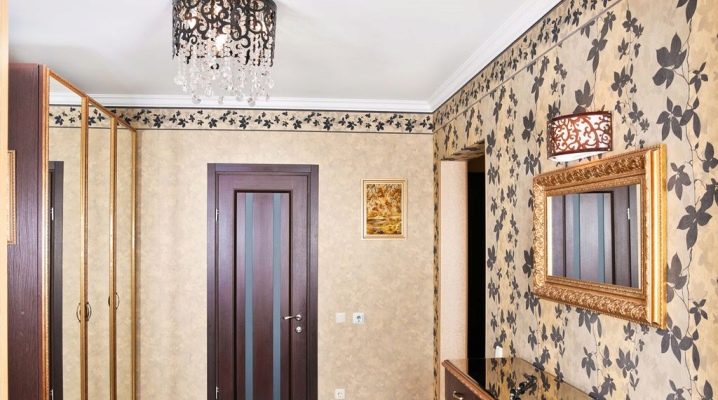
The interior in the house should be decorated not only beautifully, but also competently. This allows the indoor space to be functional, even with a small footprint. Hallways in this case have a lot of resources, especially if they are decorated in an ergonomic modern style.
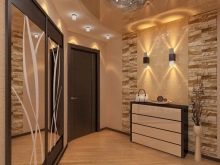
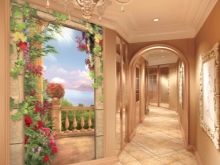
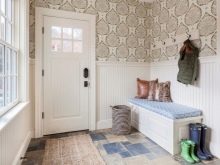
Room functions
Entrance halls are of different types: vestibules (completely isolated from the rest of the room), narrow corridors, from which an exit to several adjacent rooms opens at once, halls of a square or rectangular shape, combined with the entire apartment.
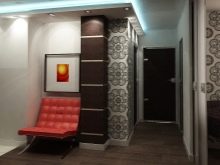


Regardless of what type and size the hallway is, it performs several functions at once:
- Transit. This is a passage from the front door deep into the apartment or house. It should have convenient storage systems for outdoor clothing, footwear and accessories in the form of hats, umbrellas, gloves and other little things.

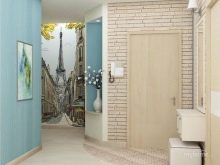
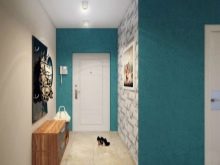
- Small dressing room. This conditional name means that exit fees, if not carried out, are completed in the hallway. This is convenient and practical, since you do not have to put on warm winter clothes in the room or bedroom and walk around the apartment in it, but it requires a place in the hallway to store these clothes and a mirror.
- Distribution. The entrance hall opens onto various functional areas in the apartment. Which one exactly depends on the layout. Often this is a bathroom, kitchen or living room. Given this feature of the room, it is important to think about how the rooms will be isolated from the hallway, since some of them should be as far away from street dirt and dust as possible.

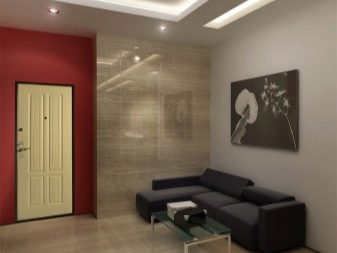
- Warehouse. All standard Soviet and post-Soviet apartments are equipped with built-in wardrobes for storing seasonal items. Modern premises are also used by many for this purpose. In hallways of the corridor type, cabinets, racks and shelves are installed, and at first glance, contradictory requirements are presented to them - compactness and spaciousness. Often only modern design is able to solve this problem, since mezzanines and bulky cabinets have already outlived their usefulness, and modern trends are focused on the most functional and compact storage systems.
- Representative or aesthetic. An important function of the hallway is the formation of the first impression of the house and its owners, and the piling up of household belongings at the very entrance is not the best indicator.
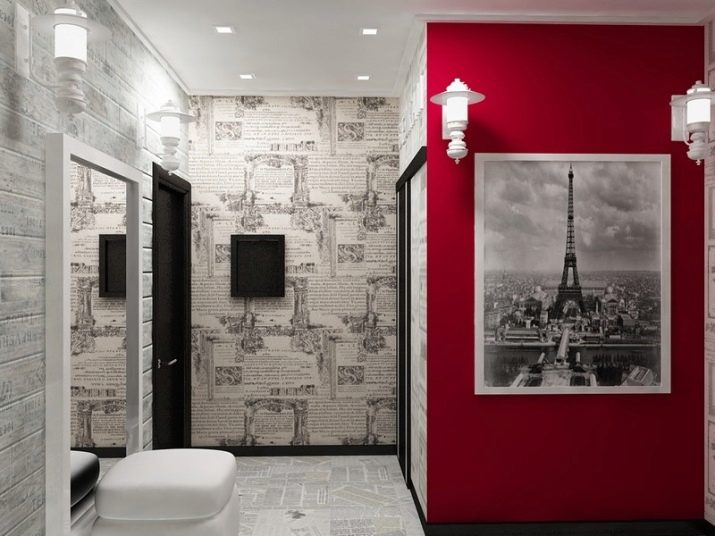
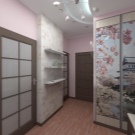

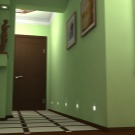
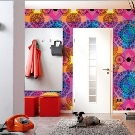
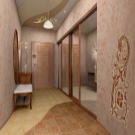
Styles features
Popular modern styles are a great solution for those who are thinking about renovating the hallway. The variety of their "characters" gives an opportunity to choose an option to your liking both within the framework of calm minimalism, and in rather bold, experimental directions.


Despite the dissimilarity of one style to another, they are united by a number of advantages:
- Striving for convenience and functionality. Every corner, every niche in the wall works, and flaws in the layout turn into advantages;
- Use of modern and inexpensive materials. Natural materials are not so much possible, but desirable, to be replaced with more budgetary, but no less practical and high-quality analogs;
- The original interior. The introduction of individual details is only welcome, and no style imposes strict restrictions on the interior design;
- The ability to give old things new life.Aged, rare, updated items and hand-made are a characteristic feature of modern styles. Do not throw away worn-out ottomans and defective furniture. They can be covered with fabric, repainted and varied with interesting details.
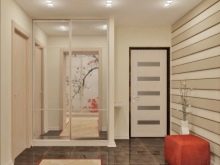
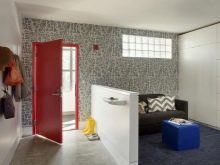
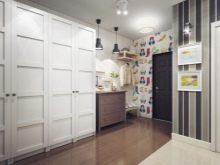
There are also some drawbacks to newfangled design trends. The main one is that it will take a lot of time to study all the subtleties on your own. You can use Internet resources, magazines, computer programs, but the result still runs the risk of being unsatisfactory. It's easier to turn to professionals who will develop a project and bring it to completion, but the price list for their services can hardly be called cheap.
The second nuance is that it is not always easy to bring together an interior composition if you choose a modern style for decorating the hallway, and the rest of the apartment is dominated by a pronounced historical or completely old renovation without a special focus.
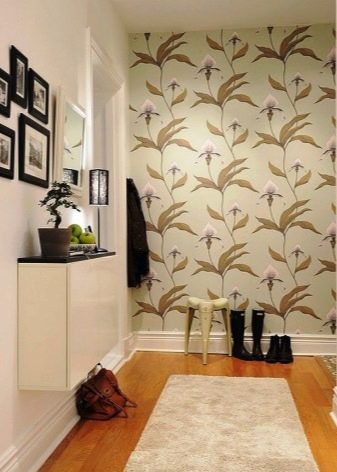
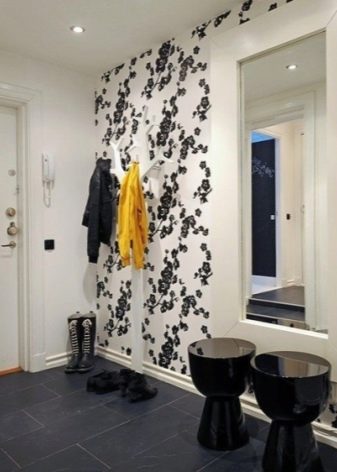
But this is not a reason to abandon the idea, but rather a reason to understand in detail what a "modern style" is and what it is "eaten" with.
And without design education, it is clear that this is not a specific name, but a collective characteristic of current trends. There are about a dozen styles themselves, and each has its own characteristics.
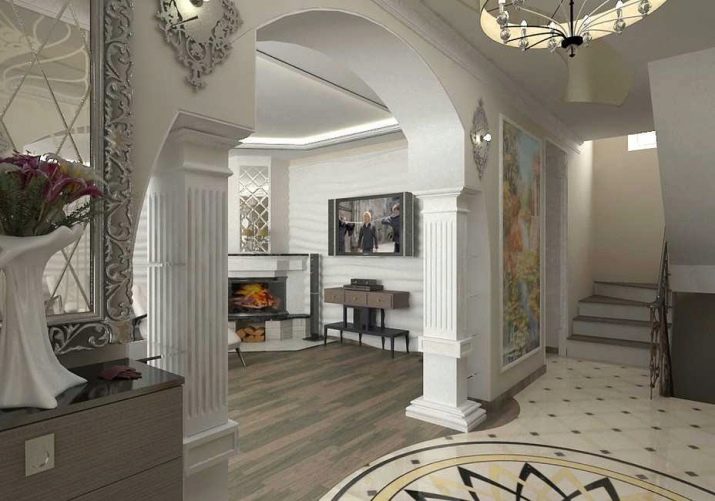
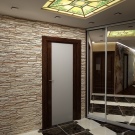

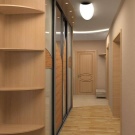
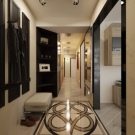
Minimalism
Many reject it due to the belief that minimalism is impractical in its desire to get rid of a lot of furniture and accessories in the room. However, it is not. The whole essence of this style is in a harmonious combination of objects that are simple in design and laconic colors. It is dominated by light shades (white, cream, beige), but saturated "thick" colors from a brighter palette are not excluded. The main thing is to follow the basic rules - to make one or two walls bright, and not to combine more than three shades.
These stylistic tricks can solve the problem of small hallways and corridors in "Khrushchev" buildings. Light colors in decoration, contrasting walls, mirrored surfaces and competent lighting visually expand the space.
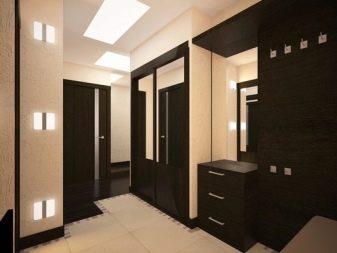
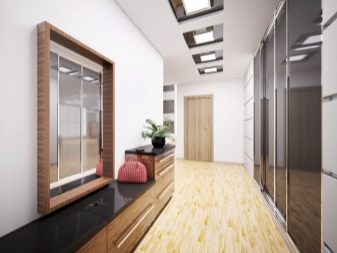
As for the furniture, it should be straight and geometric. Sharp corners, glass and mirror surfaces are welcome, but it is better to avoid complex decor in the form of forging, carving and colored ornaments.
In the dressing room, this is acceptable in the form of narrow and long sliding wardrobes with mirrored doors, small cabinet furniture, built-in wardrobes, modular structures. At the same time, the spaciousness of the interior space of the furniture does not suffer.
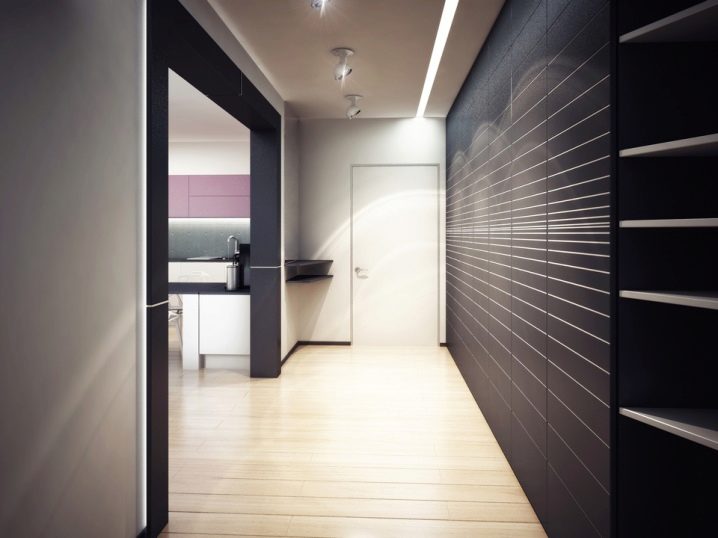
With the help of clothes rails, folding shelves and pull-out baskets, it is easy to store any seasonal wardrobe inside. They can be adjacent to soft cube ottomans and hinged closed cabinets under the ceiling in place of the mezzanines.
In terms of finishes, expressive square details are welcome, for example, tiles on the floor.
Minimalism does not exclude accessories, but there is no room for non-functional items. If it is a housekeeper, it should have keys, if it is a scubb for shoe trivia, it should contain shoe trivia (shoe spoons, creams, brushes).
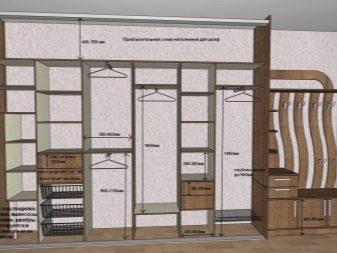
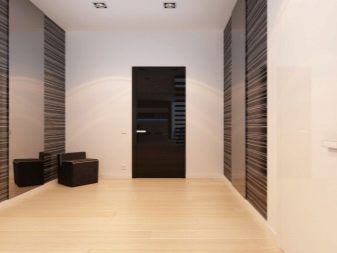
Loft
Industrial style is an ode to free space. The loft is optimal for square-shaped hallways and hallways that turn into a living room or kitchen. High ceilings in the apartment are an advantage that must be used.
This style is not rich in colors, but varied in texture. A characteristic feature of a loft-style hallway is “finishing without finishing”. That is, the space should be stylized as much as possible to match the entourage of an uninhabited room. For this, rough finishing materials are used: stone, "bare" and bleached bricks, plaster, cinder block, metal, wood.
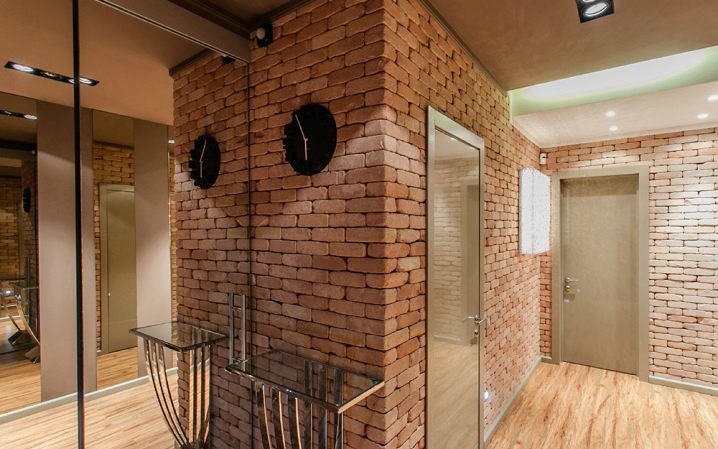
It is not at all necessary to interrupt repairs in the middle of the process in order to achieve the desired effect. Modern manufacturers offer a wide range of materials that look good but provide a neat appearance to the room.And this is an important feature, because with external negligence, the loft has no right to look cheap.
Any "imperfection" must bear the mark of the hand of the master.
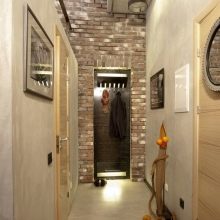
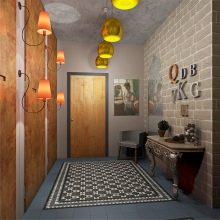
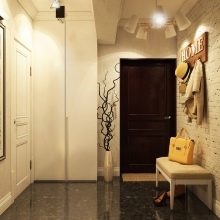
Details that are appropriate only in this style will help to support the interior composition: ceiling beams, unmasked ventilation pipes and supporting structures, lamps with steel shades, homemade rope lampshades.
The industrial genre in the interior does not tolerate deaf zoning of premises, the exception is a bathroom. If there is an exit from the hallway to the kitchen and living room, it is worth stopping the choice on doors made of tempered glass or acrylic glass so that the rooms are visible through and through, and the space has an airiness.
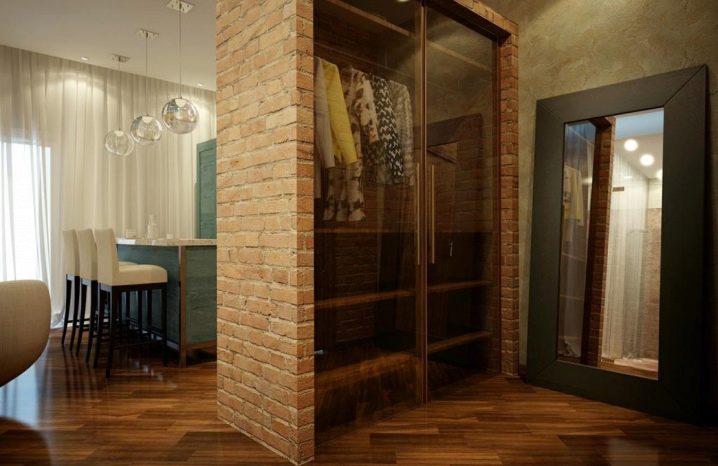
You should not pile up the hallway with decorative elements, the unusual finish itself looks original. But there is an opportunity to play on contrasts by placing an aged or rare oak wardrobe next to a brick wall, or a high steel shelf for shoes without a front and back wall against a background of bleached wood.
Furniture has the right to be bulky, solid, rough. "Random" objects in the form of antique hangers for outerwear, velvet ottomans of various shapes and colors, ethnic details look interesting.
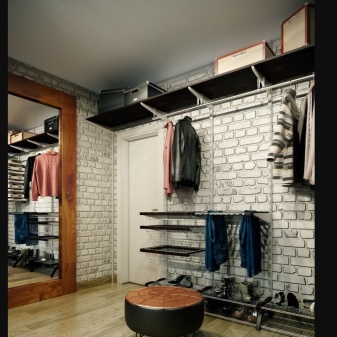
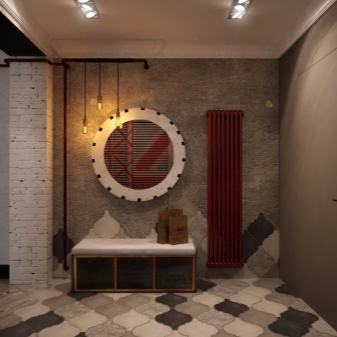
Constructivism
It is located on the border of historical and modern trends, since it was born at the dawn of revolutionary changes in the industrial and household spheres of the young Soviet state. We can say that this is a domestic innovation. Ergonomics, which put beautiful and functional items at the forefront, excluding everything unnecessary from the interior.
It is dominated by clear forms and compactness, so necessary in a multi-tasking hallway. Hence the desire to use transforming furniture and appropriate attributes, which are devoid of decorativeness.
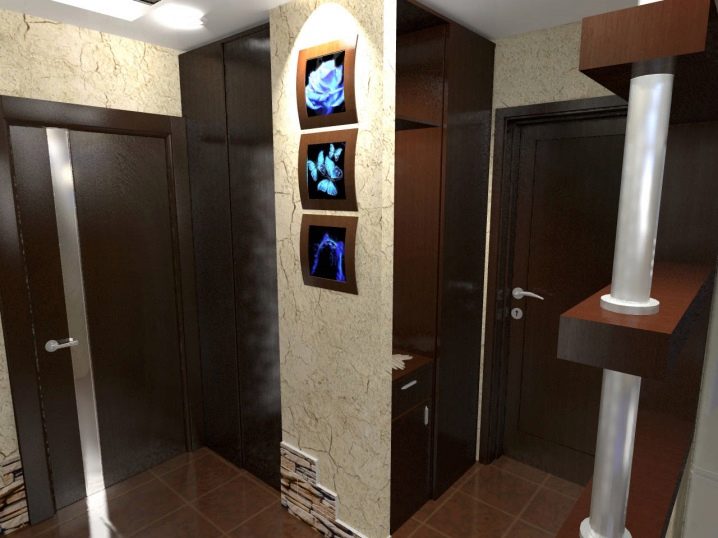
Constructivism is simplicity, but expensive, and the high cost of furniture is emphasized here by noble materials and texture. The furniture itself is mounted in niches in the walls in order to take up as little precious space as possible.
Walls are bright accessories in the design of the hallway. The color should be clear, even if it is black or bright yellow. A combination of glossy and matte surfaces is encouraged.
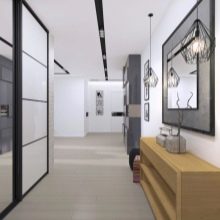


Contemporary
It completely falls under the definition of "simple and tasteful." The main advantages of this style are the orientation towards materials available to all and the lack of an idea of the finished composition. That is, at any time you can replace something from the furniture, add or remove, and the appearance of the hallway will not suffer.
When choosing a finish, you should focus on simple materials such as plastic panels and wallpaper with a pattern (in monochrome and color stripes, with heraldic lilies).
Paired lamps, floor vases and a bright accent in the form of a bench or ottoman, on which you can sit down or put things, will look good as accessories.
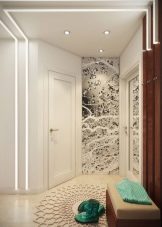
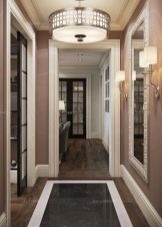


In this style, a combination of various elements of furniture is permissible: plastic shelves, a wardrobe, shelves in wall niches, cabinet cabinets from the mass market with goods for the home. But there shouldn't be many of them. Compactness and proportionality remain in the first place in the furnishings.
Not all modern styles are suitable for hallway decoration. So, shabby chic and country will be inappropriate due to natural materials, excessive "theatricality" and an abundance of small details. Kitsch and pop art crush with their “eye-catching” variegation, grunge is more appropriate in the living room and bedroom, techno and hi-tech tend to impractical chrome details and the dominance of modern technology, and fusion is too complicated for a small and functional area.
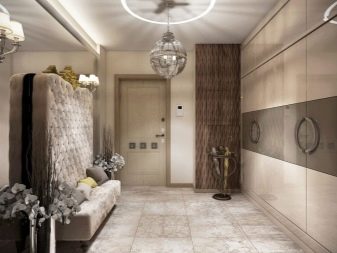
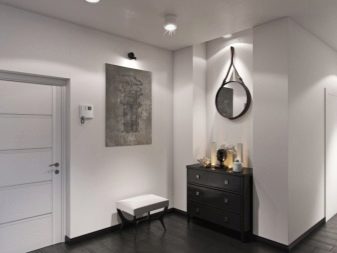
Wall and ceiling decoration
Perhaps the most unassuming part of the hallway in terms of materials is the ceiling.It is not trampled by dusty, wet or dirty soles of shoes, pets do not strive to sharpen their claws on it, heavy shopping bags are not leaning against it, therefore, for finishing the ceiling, you can choose a more aesthetic option to the detriment of wear resistance.
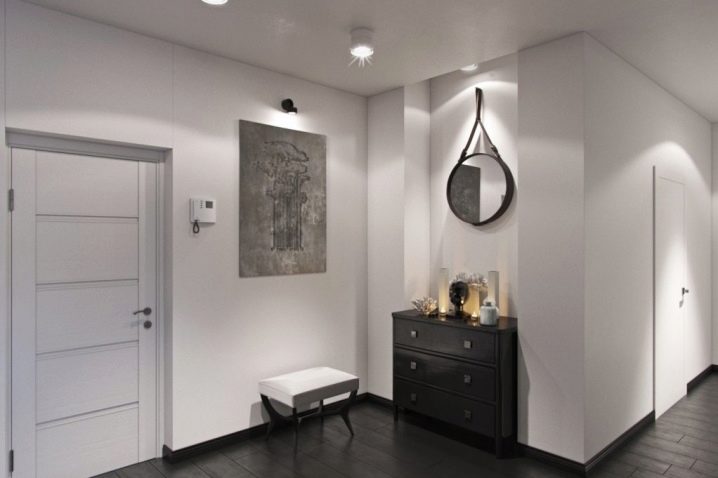
Regardless of the choice of color, traditional white or bright, there are a large number of cladding options:
- Whitewash. One-stop solution for all modern styles. In addition, whitewashing is one of the most budgetary options. You can do this procedure with your own hands without special knowledge, and if you add a few drops of color to the mixture for whitewashing the ceiling, it will acquire an interesting shade.
- Coloring. Also applies to readily available and economical options. The only condition is that the working surface must be leveled with a putty, and in some cases also covered with soil.
- Plastering. Effective reception without subsequent staining. Such a ceiling organically fits into the interiors, allowing for slight negligence and interesting
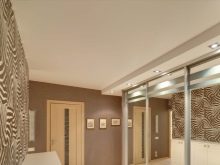
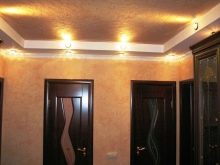
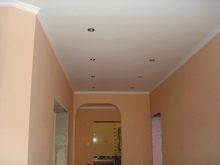
- Wallpaper. Inexpensive, beautiful and easy-to-use finish.
- Stretch ceiling. It is practical, durable and easy to clean for years. Another important plus is the ease of installation without the need to level the ceiling surface. And the third is the aesthetic appearance and presentability at a low price.

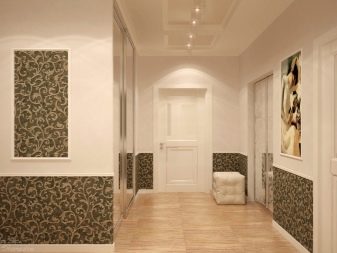
- Rack covering. It makes it possible to decorate the ceiling with an unusual embossed material, hide the flaws in the layout and forget about the repair of the ceiling and problems with cleaning for a long time. However, this method does not apply to cheap solutions, and during installation, the ceiling level drops by no less than 10 cm.
- Drywall. An economical and flexible material that makes it possible to create both a smooth surface and voluminous fancy shapes that are relevant in modern styles. Drywall is durable, environmentally friendly, does not allow condensation to form between it and the ceiling, it can serve as a base for other types of finishes.
- Wood. In modern interiors with a focus on affordable materials, there is practically no place for natural wood, unless it is a loft with beamed ceilings under a high ceiling.
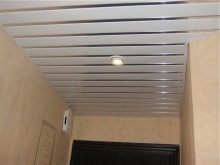
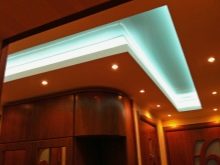
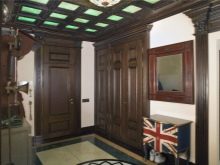
Wall decoration is a very crucial moment. Their area is larger than that of a ceiling or floor covering, while the walls are located at eye level, and any shortcomings will be immediately noticeable. A well-chosen material for wall decoration can become the basis for the interior of the hallway.
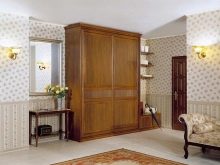
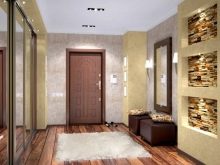
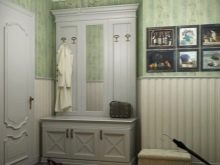
Popular types:
- Staining and whitewashing. These techniques are borrowed from the ceiling decoration and have already taken root in the styles that are now popular. They are actively used by the loft, and provence, and minimalism. For some directions, uniformity and light color are important, for others, texture is a priority. One of the fashion trends is bleached brick or stone, the relief of which is visible through a layer of paint.
- Liquid wallpaper and fiberglass. The usual vinyl and traditional ones will work too, but not in white or light colors. Literally after a year or two of frequent cleaning, they will lose their gloss, while liquid wallpaper and glass wallpaper after hardening can be washed, repainted many times and even restored.
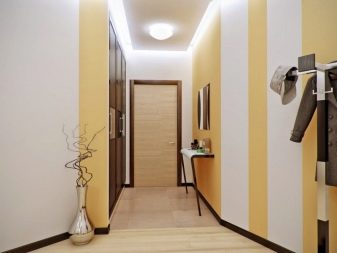

- Decorative plaster. Easy to apply, moisture resistant, does not fade. Due to its consistency, it can bridge cracks and hide defects on the walls. Creates a smooth or textured surface depending on the method of application. But the main advantage of this material is the ability to imitate finishing with marble, amber, malachite and make stucco.
- Tile. A popular type of decoration for the hallway, since it is resistant to scratches and mechanical damage (but not strong impacts), easy to clean, retains a beautiful appearance for years, and can be combined with any materials.
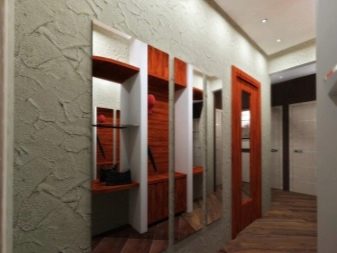
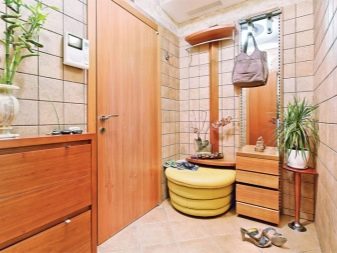
- Brick, stone, cinder block, foam block. These rough materials are difficult to apply in decoration, but if the walls are composed of them, this is a good opportunity to use relief and texture in the interests of design.Red brickwork, bleached stone, painted stone are the basis of industrial styles.
- Decorative panels. Wall decoration with PVC materials is convenience, economy, practicality, aesthetics and wide possibilities of styling. The outer surface of the panels can be smooth or embossed, plain or colored, with a small pattern or photo printing, imitation of the texture of wood, brickwork, stone.
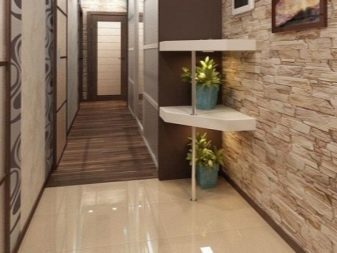
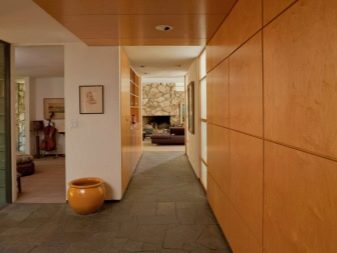
We decorate the floor
If the attitude to the decoration of the ceiling is the most loyal, then the floor is the most "capricious" of the functional fragments of the interior. There are a lot of requirements for the coating in the hallway. It should be both beautiful and inexpensive, and resistant to abrasion, and moisture resistant, and warm. Some materials, for all their merits, are not able to meet these requirements.
So, natural wood is not suitable for flooring in the hallway. Parquet is bad, suffering from any careless movements and water. Linoleum fades quickly, fades and sometimes swells.
Laminate and carpet are inappropriate.

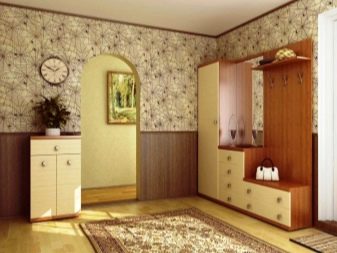
And the popular materials for finishing the floor, which are not afraid of frequent cleaning, high permeability of the room, mechanical damage and other everyday manifestations include:
- Self-leveling floor. This is a difficult and expensive method, but one of the most successful in the long term. Outwardly, it looks like an expensive parquet, it is pleasant to the touch like rubber, and in terms of performance it is simple like a tile.

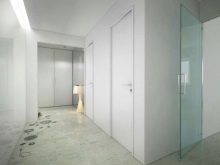
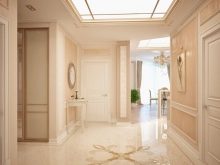
- Rubber coating. It also belongs to the expensive ones, but this is a smart investment in repairs. Rubber has unique properties. It is antibacterial, non-toxic, resistant to dirt, moisture, temperature extremes, mechanical damage, and durable. Additionally, the rubber floor provides good sound insulation.

- Porcelain stoneware. A beautiful, solid finish for decades. It is easy to wash, difficult to damage, and is pleasant to the eye and to the touch. However, it is important to consider that porcelain stoneware itself is a rather cold material. When choosing it, it is important to take care of the underfloor heating system in the hallway if this area leads to the bathroom, kitchen or other rooms.
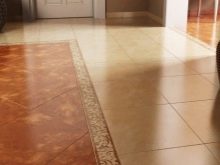


Lighting
Hallway lighting has several functions:
- Decorative. Here, the placement of light accents at eye level plays a role. Lamps, sconces, light bulbs, beautiful lampshades are needed not so much for lighting, but as accessories. Such minor details are very important for creating coziness and integrity in a modern interior.
- Practical. In this case, the lighting performs its direct function. The main source of light is considered to be a ceiling chandelier, a lamp or a group of lamps, and auxiliary lighting includes baseboards, lighting inside the wardrobe, and light bulbs above the shelves.
- Architectural. The most sophisticated type of lighting that professional designers use to create visual effects in a room.

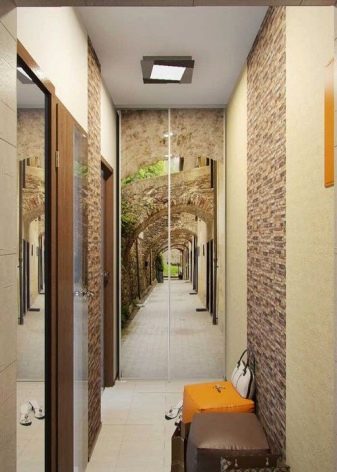
This can be zoning if the hallway is large, and a visual increase in space if the room is small. In the first case, the light sources are installed directly along the perimeter of the functional areas and controlled by different switches. In the second, niches in the walls are often highlighted, to give relief and volume to the walls, they use illumination under the ceiling, which makes it a little higher for the eyes, or focus on one wall, combining light and drawings with perspective.
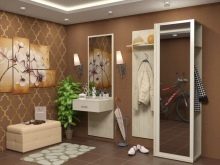
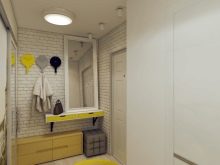
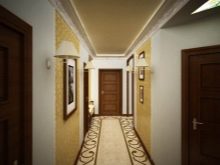
Furniture selection
In hallways, two types of furniture are common: cabinet and built-in. It, in turn, is divided into open and closed storage systems. Closed - these are cabinets, mezzanines and shelves with doors. Open - cabinets, which, according to the designer's idea, do not have doors, shelves, shoe shelves, hangers and hooks.
Design features, color, texture, materials and dimensions of the product are determined by the style and size of the hallway.A built-in wardrobe is better for a small-sized one, cabinet furniture for a roomy one; in a minimalistic interior - light, and in an industrial interior - black.
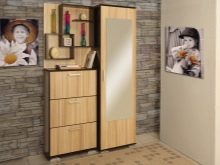
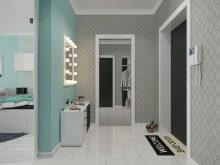
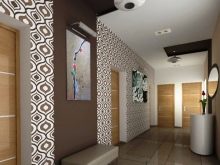
To optimize the internal space of storage systems, the following are used:
- Multilevel clothes bar.
- Pantograph bar (with handle for lifting and lowering from bottom to top in tall cabinets).
- Pull-out linen baskets.
- Hangers with hooks.
- Retractable trouser holders.
- Hooks for small accessories.
- Boxes.
- Folding scubbs (soft shelves).
Wardrobes are often complemented by benches or ottomans in small hallways and sofas in large ones.
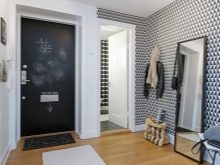

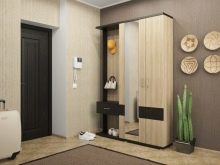
Popular manufacturers
Sometimes confusion arises in the use of the word "hallways", since it is both the name of the room and the name of a functional storage system in the form of a cabinet with many compartments, shelves and parts.
When purchasing a ready-made hallway, it is important to pay attention to the materials of manufacture and the country of origin. In the middle and premium segment, Italian and German natural wood products are leading, as well as American design innovations from various materials, from plastic to metal.
In the economy segment, you can choose a decent model of Russian production from solid wood, MDF and laminated chipboard and furniture of the Swedish concern Ikea.
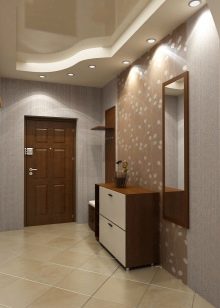
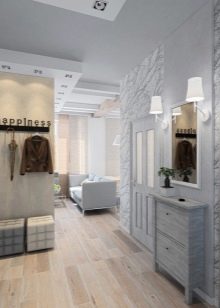
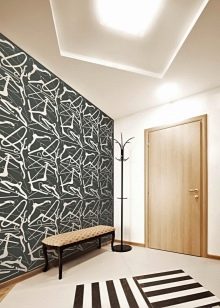
Color solutions
Several factors influence the choice of color:
- Personal preferences. Whoever says anything about the design rules, the owner's desire comes first. If you want to make a hallway in pink - why not? It is only important to choose the right shades and materials.
- Dimensions. In a large hallway, it is easy to experiment with a dark palette (brown, dark gray, blue, black, wine, emerald, graphite, wenge, mahogany), but a small one is more convenient to play with light colors (white, baked milk, light gray, ocher, blue , silver, metallic, peach).
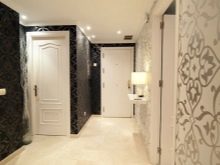
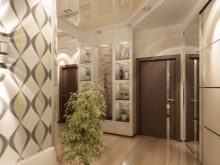

- Style. Each modern trend has its own color rules, and it is not necessary to follow them strictly, but it is worth adhering to. Minimalism will never work with a pop art color palette, and vice versa.
- Features of the layout. A room close to a square is considered ideal. It does not need to be corrected due to the play of color and light, but pencil-case corridors and small hallways with very high ceilings must be painted in a certain way. For example, you can “lower” the ceiling using peach on the walls and dark terracotta on the ceiling.
- General rules of stylistics. They are simple and straightforward: do not combine more than 3-5 colors, choose one dominant color, select colors in harmony with the colors of the entire apartment, and so on.
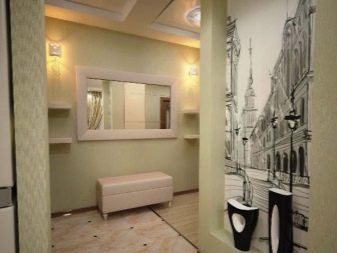
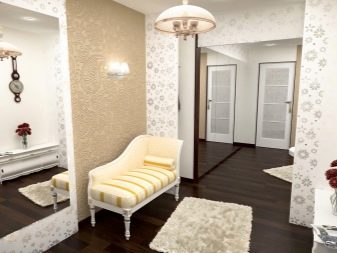
Design ideas
Stylish and beautiful hallways are those in the design of which bold ideas are used.
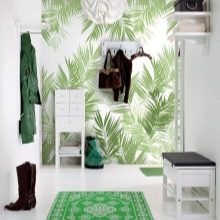
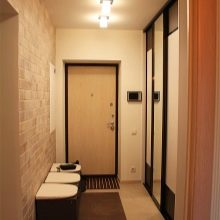
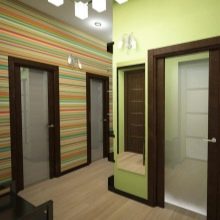
First of all, you should think about the appearance of storage systems. The presence of a tightly closed cabinet is not a prerequisite. You can place hooks and hangers of unusual shapes in a recess in the wall, make a shoe shelf from an old closet, and store things that need to be hidden from view under the seat of a small sofa-bench.
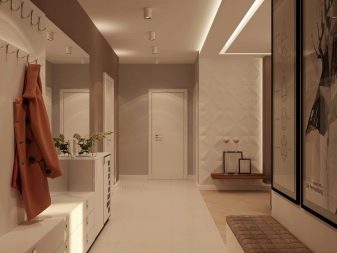
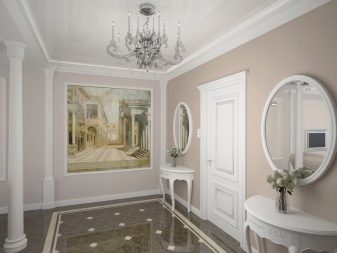
The second technique for creating an original design is playing with light and the appearance of lighting fixtures. Since the entrance hall in almost 100% of cases is a room without windows, artificial light is simply necessary in it. A non-trivial type of lamps (LED strips, lampshades made of wicker baskets, threads, bottles, high steel floor lamps, cozy plaster sconces) can revive the most boring interior.
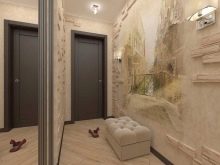
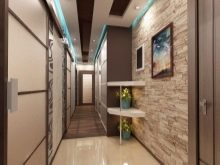
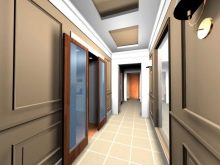
And the last way is to focus on the details. To do this, you can borrow decorative elements from different styles or turn household items into decoration. For example, if it's autumn and puddles outside, let the bright rubber boots and raincoats of all family members not hide in the closet, but stand in the most conspicuous place. Straw baskets with flowers, hats, country shirts, sports helmets and equipment can also add zest.Even a high-speed bike, which only had a place on the brackets in the hallway, can be turned from an object that disturbs everyone into an accessory, devoting the interior of the hallway to a sports theme.
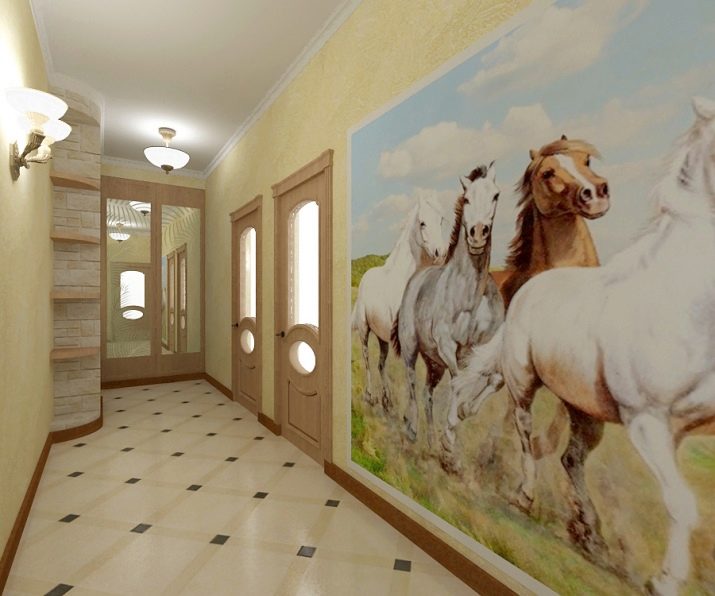
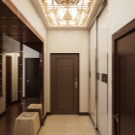
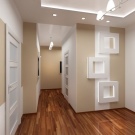

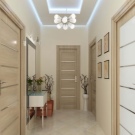
You will learn more about how to create a cozy hallway in a modern style in the following video.













The comment was sent successfully.